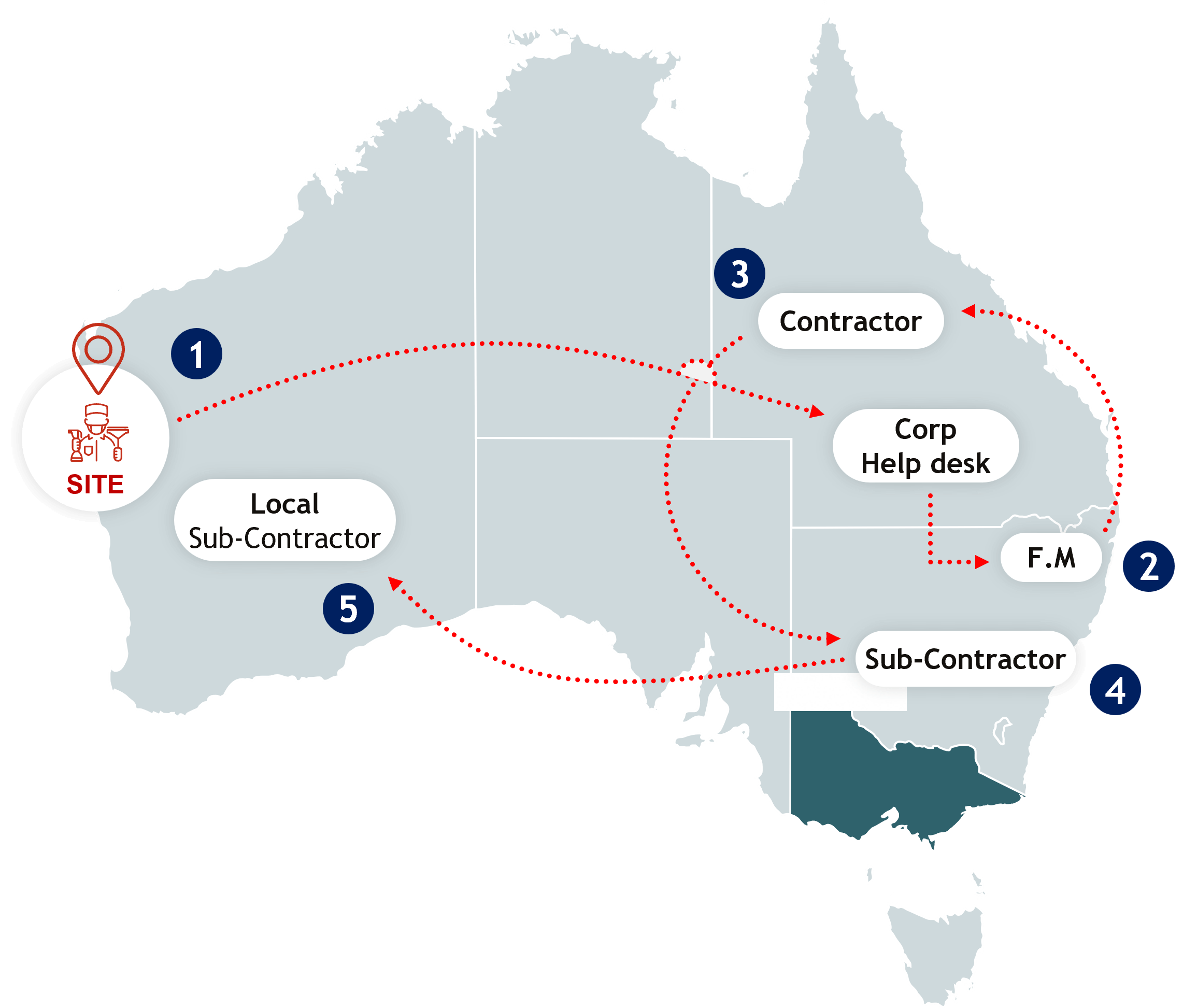Are You Being Blindsided By Subcontracting Arrangements
The facilities management landscape is rife with hidden risks associated with known and unknown subcontracting arrangements. With increasing contractual and legislative requirements, such as Workplace Health & Safety and Duty of Care, it is critical Facility Managers (FMs) have full transparency on who is entering their site, for what purpose and for how long.
Beyond the Contract: The Hidden Risks in Facility Management Outsourcing
FMs have a demanding task of managing complex facilities over multiple locations. To ensure sites remain in working order, keeping people and assets safe, FMs outsource maintenance and repairs to individual contractors and subcontractors with specialist expertise and knowledge across trades including electrical, air conditioning (HVAC), fire protection, cleaning, and general maintenance.
During the procurement process, contract-related risks are embedded in the scope, terms, and conditions of the contract. Signed contracts detail the responsibilities for each party including all obligations for working on your site, specifically restriction of subcontractor access and engagement. Whilst contractually everything looks sound on paper, unbeknownst to the FM, the person showing up onsite to complete the work may not be an employee of the contractor who signed the contract. Where this is the case, the person turning up is not legally bound by the original contract and has no visibility on the agreed contract terms and conditions at all. This creates a significant risk for you and your company as the onsite contractor is unaware of the site requirements and specific details on the scope of the work to be delivered. Despite these substantial risks, subcontracting remains an indispensable aspect of modern facility management.
Subcontracting – The Need & The Risks
Subcontracting is a necessity due to Australia’s vast landscape and the geographic disbursement of facilities. Additionally, due to the dependence on specialised trades, limited resource availability, and the necessity for specific qualifications and licensing, subcontracting frequently becomes the sole viable option for contractors.
Three key factors continue to result in poorly managed subcontracting arrangements leading to unrestricted site access and heightened organisational risk. These include:
- Hiring of Multi-Disciplinary Subcontractors: The engagement of a single, multi-disciplinary provider to cover a range of services, thereby creating a significantly higher dependency on the successful outsourcing of specialised work;
- Escalating Skill Shortages: A growing shortfall of skilled labour available to complete work results in contractors unable to find and employ specialist technicians. Specialised technicians who are employed are also being required to work across multiple head contractors to satisfy the demand often resulting in slow and poor work quality; and
- Inadequate (or non-existent) Work Order (WO) System & Process Integration: Each contracting company employs its own isolated and decentralised WO system, causing a lack of seamless communication. This leads to subcontractors not receiving the original statements of work, leaving technicians unaware of job requirements, safety risks, and governance mandates.
Whilst contractually subcontracting arrangements can be prohibited, in reality is it is both required and covertly conducted to maintain facilities. Risks are amplified further as subcontractors hire more subcontractors, sometimes five or six levels from the original client contract, often referred to as ‘subbies on subbies’.
Unravelling The Complexities – A Common Subcontracted Workflow
The example below demonstrates a typical arrangement across a client’s facilities. Here a technician working at Karratha, WA, will be delivering work for multiple head contractors across a range of site locations, completing different disciplines at each site. The technician is unaware of the critical contractual obligations under each WO nor the required WHS policies of each site, thereby creating more risks for the FM.
A Multi-Tiered Subcontracting Chain
- A person onsite at Karratha, WA, logs a repair request to their helpdesk.
- This flows through to the Facilities Manager, who in turn provided a work order to the contracted provider.
- Due to labour constraints, locations, or specialised skill requirements, the Head Contractor activates their own subcontracting arrangements.
- This contractor then issues a WO from their own system to a subcontractor.
- The subcontractor cannot personally complete the work, so they provide their WO to another subcontractor.
- There is now a 3-tiered WO and a subcontractor attending your sites, unaware of job requirements and safety processes/procedures.
Decreased Visibility For All Parties
- Only the primary contractor knew the agreed requirements and standards set out in the original contract and work order.
- The second subcontractor was unaware of their compliance obligations and lacked sufficient information on the safety obligations.
- The primary contractor closed the job without any visibility on the quality or completion level of the repair work.
- The FMs blindly trusted the primary contractor and approved payment for the repair.

Complete Subcontractor Transparency – Independent & Accurate Systems
To address these challenges head-on and ensure a higher standard of accountability and safety, a robust, technology-driven solution is essential. Verified provides visibility on these third-party arrangements and ensures the person turning up on your site understands and follows site requirements and rules. If they don’t, won’t, or can’t, they will not have access and approval to be on your site.
Specifically, Verified’s system provides real-time contractor and subcontractor data relating to:
- Who is on site;
- Who they work for;
- How long they are onsite for;
- Their level of compliance; and
- Their status and that of their repair/maintenance work.
Learn More Today
Our market leading technology-based solution continues to assist clients in managing their contractors and building portfolios. From stopping subcontractors and their subcontractors from entering the site, to not allowing site access to contractors with incomplete induction process, Verified continues to reduce the operation and reputational risk from third party access. For further information on how you can have greater visibility on your subcontractors, book a demo here with the Verified team today.
See the following: Fair Work Ombudsman uncovers how a leading Australian supermarket chain and it’s cleaning contractors were not adhering to workplace laws.



